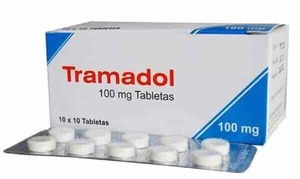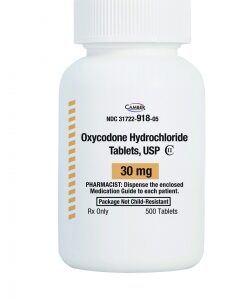Tramadol, available in various strengths, including Tramadol 100mg, is a centrally acting analgesic that plays a pivotal role in pain management. This article aims to provide a comprehensive exploration of Tramadol 100mg, shedding light on its uses, benefits, potential side effects, and essential considerations in medication management.
Understanding Tramadol 100mg:
Tramadol is classified as an opioid analgesic and is often prescribed to alleviate moderate to moderately severe pain. As an extended-release formulation, Tramadol 100mg is designed to provide prolonged pain relief over an extended period. Its mechanism of action involves binding to opioid receptors in the brain, altering the perception of pain and providing relief.
Uses of Tramadol 100mg:
- Pain Management: Tramadol is primarily utilized for the management of pain ranging from moderate to moderately severe. Its efficacy in addressing various types of pain, including post-surgical pain, chronic conditions, and injury-related pain, makes it a versatile option in the realm of analgesics.
- Chronic Pain Conditions: Tramadol is often employed in the treatment of chronic pain conditions, such as osteoarthritis and fibromyalgia. Its extended-release formulation allows for around-the-clock pain relief, contributing to an improved quality of life for individuals dealing with persistent pain.
Benefits of Tramadol 100mg:
- Extended Pain Relief: Tramadol 100mg, being an extended-release formulation, offers prolonged pain relief. This characteristic is particularly beneficial for individuals requiring continuous pain management without the need for frequent dosing.
- Versatility in Pain Conditions: Tramadol demonstrates efficacy in addressing a spectrum of pain conditions, from acute postoperative pain to chronic conditions like neuropathic pain. This versatility makes it a valuable tool in the hands of healthcare providers managing diverse patient populations.
- Reduced Dependency Risks: While Tramadol is an opioid, it has been considered to have a lower risk of dependency compared to traditional opioids like morphine. This aspect is crucial in cases where long-term pain management is necessary, and the risk of opioid dependency needs to be carefully considered.
- Improvement in Functioning: By alleviating pain, Tramadol can contribute to improved physical functioning and mobility in individuals suffering from conditions that limit their daily activities due to pain.
Considerations and Precautions:
Despite its benefits, the use of Tramadol 100mg necessitates careful consideration of potential side effects and precautions to ensure safe and effective pain management.
- Opioid Side Effects: Tramadol shares common side effects with other opioids, including nausea, constipation, dizziness, and sedation. Patients should be informed about these potential effects, and healthcare providers may recommend strategies to manage them, such as dietary changes for constipation or gradual changes in body position to mitigate dizziness.
- Respiratory Depression: Like other opioids, Tramadol has the potential to cause respiratory depression, particularly in high doses or when combined with other respiratory depressants. This risk is higher in individuals with respiratory conditions. Careful monitoring of respiratory function is essential during Tramadol use.
- Seizure Risk: Tramadol has been associated with an increased risk of seizures, particularly at higher doses. Individuals with a history of seizures or those taking medications that lower the seizure threshold should exercise caution and consult with their healthcare provider about the potential risks and benefits of Tramadol.
- Serotonin Syndrome: Tramadol’s interaction with serotonin receptors can lead to serotonin syndrome, a potentially life-threatening condition characterized by symptoms such as agitation, hallucinations, rapid heartbeat, and elevated body temperature. This risk is heightened when Tramadol is used concomitantly with other medications that affect serotonin levels.
- Withdrawal Symptoms: Prolonged use of Tramadol, particularly at higher doses, may lead to physical dependence. Abrupt discontinuation can result in withdrawal symptoms, including anxiety, sweating, insomnia, and flu-like symptoms. Healthcare providers may recommend a gradual tapering of the medication to mitigate withdrawal effects.
- Contraindications: Tramadol is contraindicated in certain situations, including in individuals with a history of hypersensitivity to opioids, severe respiratory depression, and those with acute intoxication with alcohol, hypnotics, opioids, or psychotropic drugs.
- Drug Interactions: Tramadol can interact with various medications, including certain antidepressants, antipsychotics, and other opioids, potentially leading to adverse effects or reduced efficacy. Individuals should inform their healthcare providers about all medications, including over-the-counter drugs and herbal supplements, before starting Tramadol.
Dosage and Administration:
Tramadol 100mg is just one of the available strengths, and the appropriate dosage is determined by factors such as the severity of pain, the individual’s response to the medication, and any underlying health conditions. The extended-release formulation is typically taken once daily, providing continuous pain relief.
It is crucial for individuals to adhere strictly to the prescribed dosage and administration guidelines. Crushing or breaking extended-release tablets can result in an immediate release of the entire dose, potentially leading to overdose. The medication should be taken with or without food, as directed by the healthcare provider.
Conclusion:
Tramadol 100mg stands as a valuable tool in the management of moderate to moderately severe pain. Its extended-release formulation offers the advantage of prolonged pain relief, contributing to improved functioning and quality of life for individuals dealing with diverse pain conditions. However, the use of Tramadol requires a balanced approach, considering potential side effects, precautions, and individual patient characteristics.
A thorough understanding of the patient’s medical history, concurrent medications, and risk factors is essential for healthcare providers when prescribing Tramadol. Open communication between healthcare providers and patients is crucial in addressing concerns, managing side effects, and ensuring the optimal use of Tramadol in pain management. As with any medication, a personalized and patient-centered approach is key to achieving the desired therapeutic outcomes while minimizing potential risks.





Reviews
There are no reviews yet.